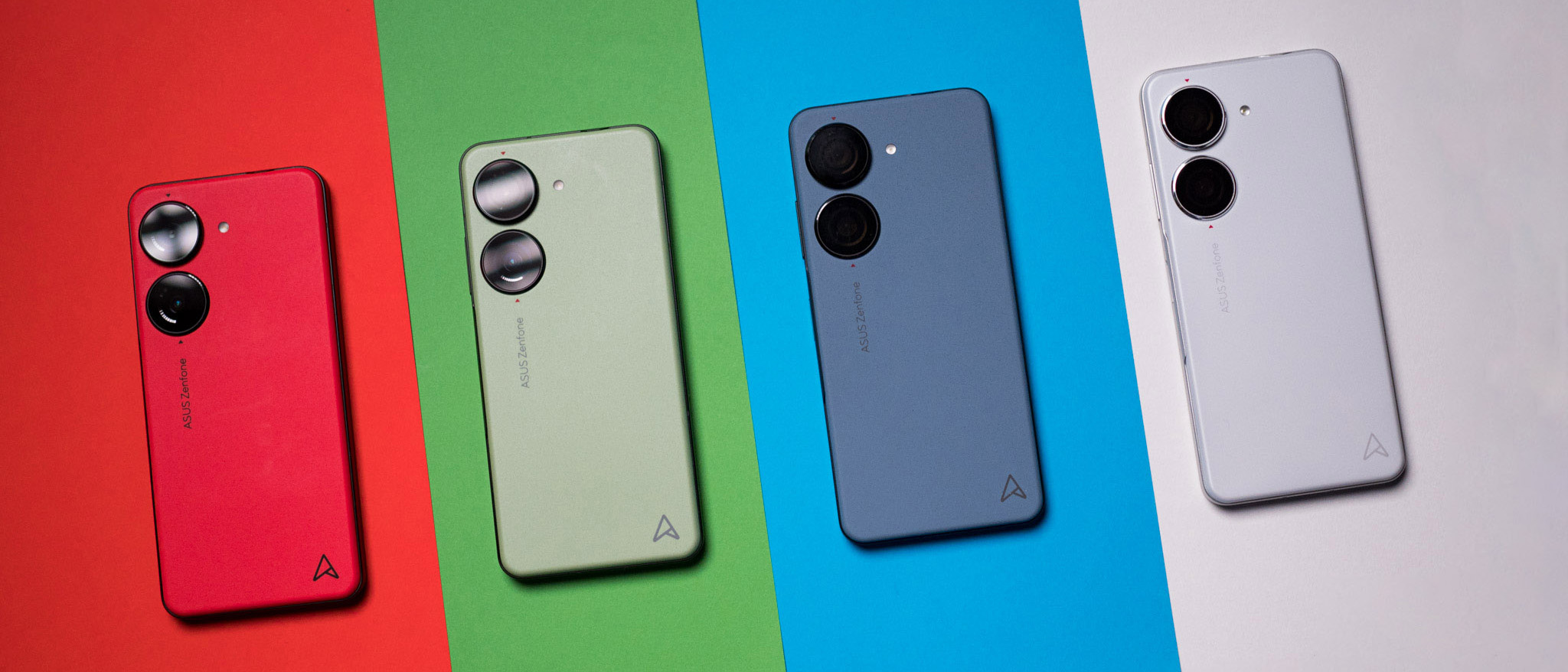Android Central Verdict
If you need a small phone in 2023, the Zenfone 10 is the best option by a long mile. ASUS has once again managed to deliver a phone that delivers all the features you want in a high-end phone in a chassis that's designed for one-handed use. There's even a 3.5mm jack here, and you get wireless charging as well. Throw in a clean software with extensive customizability, IP68 ingress protection, and decent cameras, and you get a phenomenal all-round package. I would've liked a zoom lens as that would've made the Zenfone 10 just that little-bit more suited for my own needs, but other than that omission, there isn't anything missing here.
Pros
- +
Ideally suited for one-handed use
- +
Doesn't miss out on any hardware features
- +
Decent cameras
- +
Wireless charging
- +
3.5mm jack is intact
- +
IP68 dust and water resistance
- +
Clean software with plenty of customization options
Cons
- -
Only two Android OS updates
- -
No zoom lens
- -
Not available in as many markets as rivals
Why you can trust Android Central
ASUS made a lot of changes to its Zenfone series over the last four years, and the current iteration of the portfolio is all about size. While other manufacturers are turning to larger and taller phones, ASUS is doubling down to deliver a phone that's designed for one-handed use. That was the key differentiator with the Zenfone 9 last year, and ASUS is continuing down the same path with the Zenfone 10.
Therefore, the Zenfone 10 maintains the same diminutive size as its predecessor, coming in a height of under 150mm and width of under 70mm, giving it a distinct edge over just about every other phone I've used this year. While ASUS didn't tweak the dimensions, there's wireless charging on offer here — one of the most requested features, according to the brand.
And while gargantuan devices like the Galaxy S23 Ultra and Xiaomi 13 Ultra miss out on the feature, you'll find a 3.5mm jack on the Zenfone 10. There's also IP68 ingress protection — same as last year — and a decent-sized battery that manages to last well over a day. There's better customizability to the software as well, and ASUS continues to deliver a clean and uncluttered interface that's a delight to use.
The one thing missing on the Zenfone 9 was a zoom lens, and I was holding out for ASUS to introduce that this year. However, that isn't the case, and the Zenfone 10 retains a dual camera array that's largely unchanged from last year; it looks like we'll have to wait another generation to see noticeable upgrades on the camera hardware side of things.
I used the Zenfone 10 for the better part of a month now, and I think it is the best small phone currently available — there really isn't another device that offers the same feature-set in such a small size.
ASUS Zenfone 10: Specs, pricing, and availability
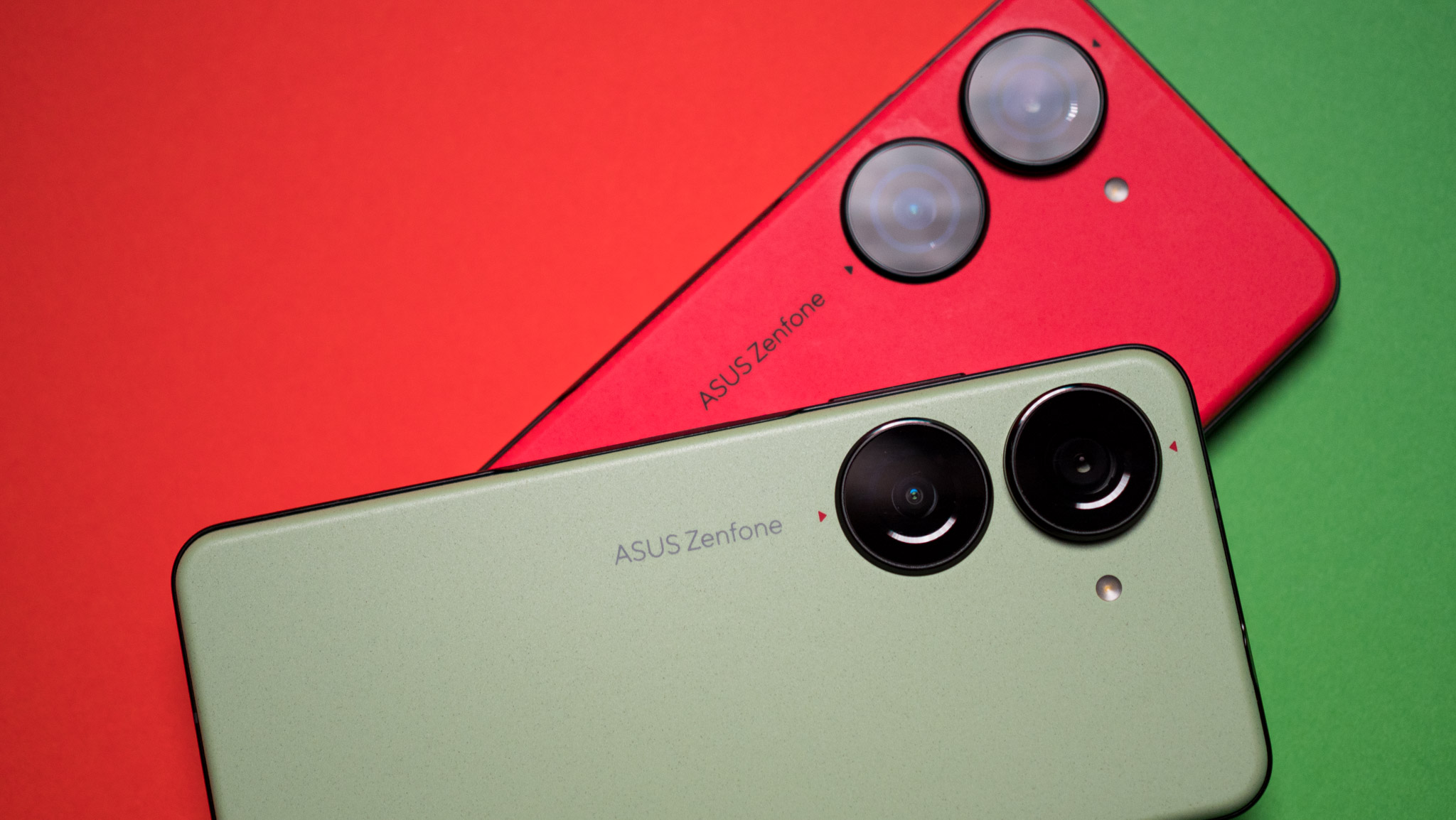
ASUS unveiled the Zenfone 10 on June 29, and the phone is now available in select countries in Europe, starting at €799 in the region. It is also debuting in Taiwan and Hong Kong, with a launch in North America slated for later in the year.
The Zenfone 10 is available in a few storage configurations: the base version has 8GB of RAM and 128GB of storage, and there's an 8GB/256GB model, along with 16GB/256GB and 16GB/512GB editions. Like last year, there's no mention of whether the Zenfone 10 will make its debut in India, and that's a puzzling move considering the country is one of ASUS's largest markets.
| Category | ASUS Zenfone 10 |
|---|---|
| OS | Zen UI 10 based on Android 13 |
| Display | 5.92-inch FHD+ (2400x1080) AMOLED, 120Hz (144Hz in games), HDR10+, Gorilla Glass Victus |
| Chipset | Qualcomm Snapdragon 8 Gen 2, 1 x 3.2GHz Cortex X3, 2 x 2.8GHz Cortex A715, 2 x 2.8GHz Cortex A710, 3 x 2.0GHz Cortex A510, Adreno 740, 4nm |
| RAM | 8GB/12GB LPDDR5X |
| Storage | 256GB/512GB UFS 4.0 |
| Rear camera 1 | 50MP f/1.9 Sony IMX766, 1.0um pixels, OIS, gimbal stabilization, 8K at 24fps, 4K at 60fps |
| Rear camera 2 | 13MP f/2.2 wide-angle, 1.12um pixls |
| Front camera | 32MP fixed focus, 1080p video |
| Ingress protection | IP68 dust and water resistance |
| Security | Side-mounted fingerprint module, face unlock |
| Audio | Stereo sound, 3.5mm jack, AptX suite, 24-bit/192kHz audio |
| Connectivity | Global Sub-6 5G, Wi-Fi 7, Bluetooth 5.3, NFC |
| Battery | 4300mAh battery, 30W USB PD charging, 15W Qi wireless charging |
| Dimensions | 146.5 x 68.1 x 9.4mm, 172g |
| Colors | Green, Red, Black, White |
ASUS Zenfone 10: Design
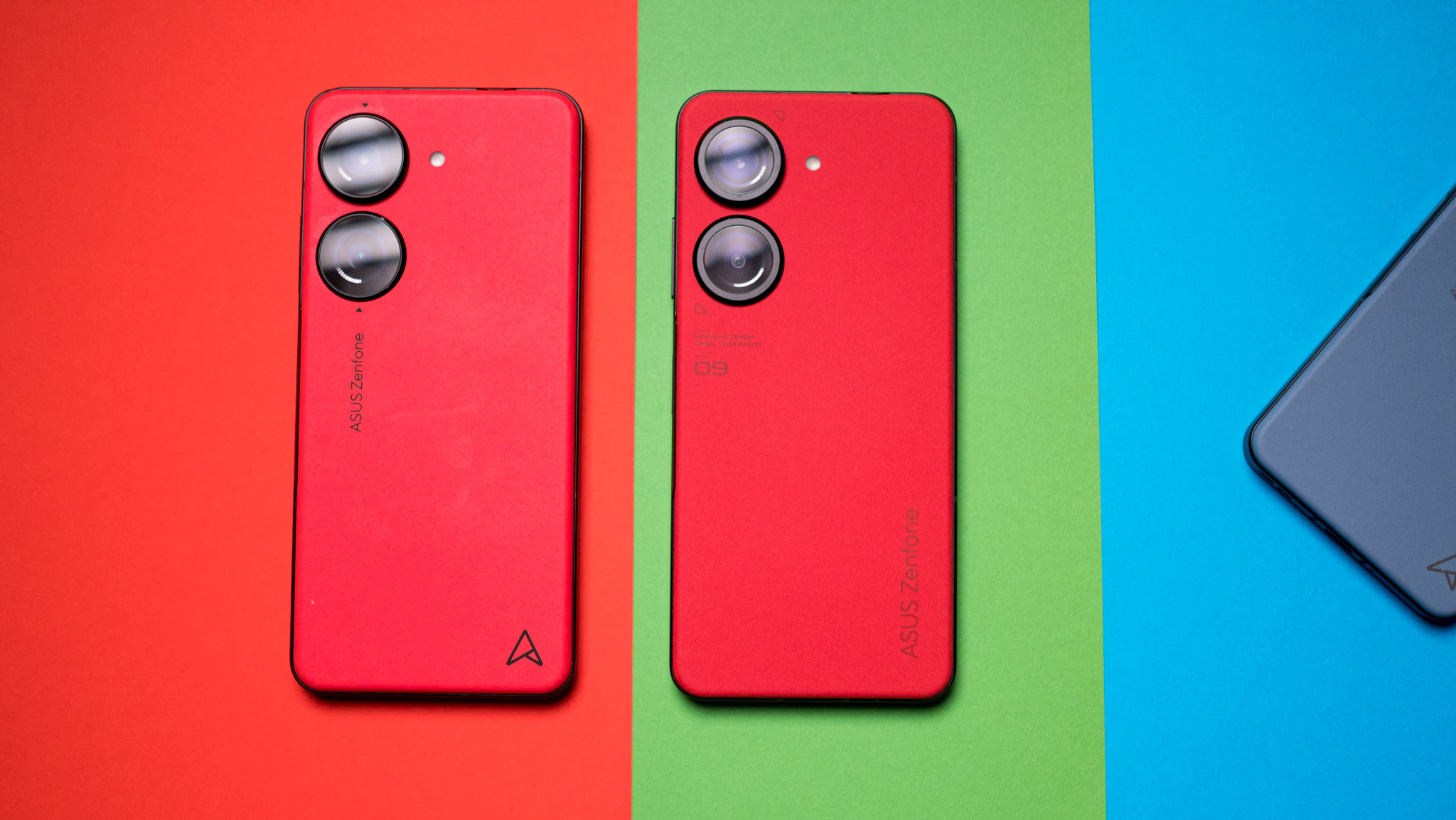
I really liked what ASUS with the design of the Zenfone 9, so it's nice to see that the brand didn't make any major changes to the overall aesthetic with the Zenfone 10. The phone shares a design that's identical to its predecessor, with the same large rings adorning the cameras at the back, and the same polymer finish at the back that feels great to hold.
Although ASUS didn't change the design, there are subtle tweaks here: the rings around the cameras have a cleaner design, and there isn't as much text at the back, leading to a more minimalist look. The ASUS Zenfone branding is now located below the camera housing, and you get a stylized monogram logo at the bottom to celebrate ten years of the Zenfone series. I like the changes as it makes the Zenfone 10 look a little more elegant.
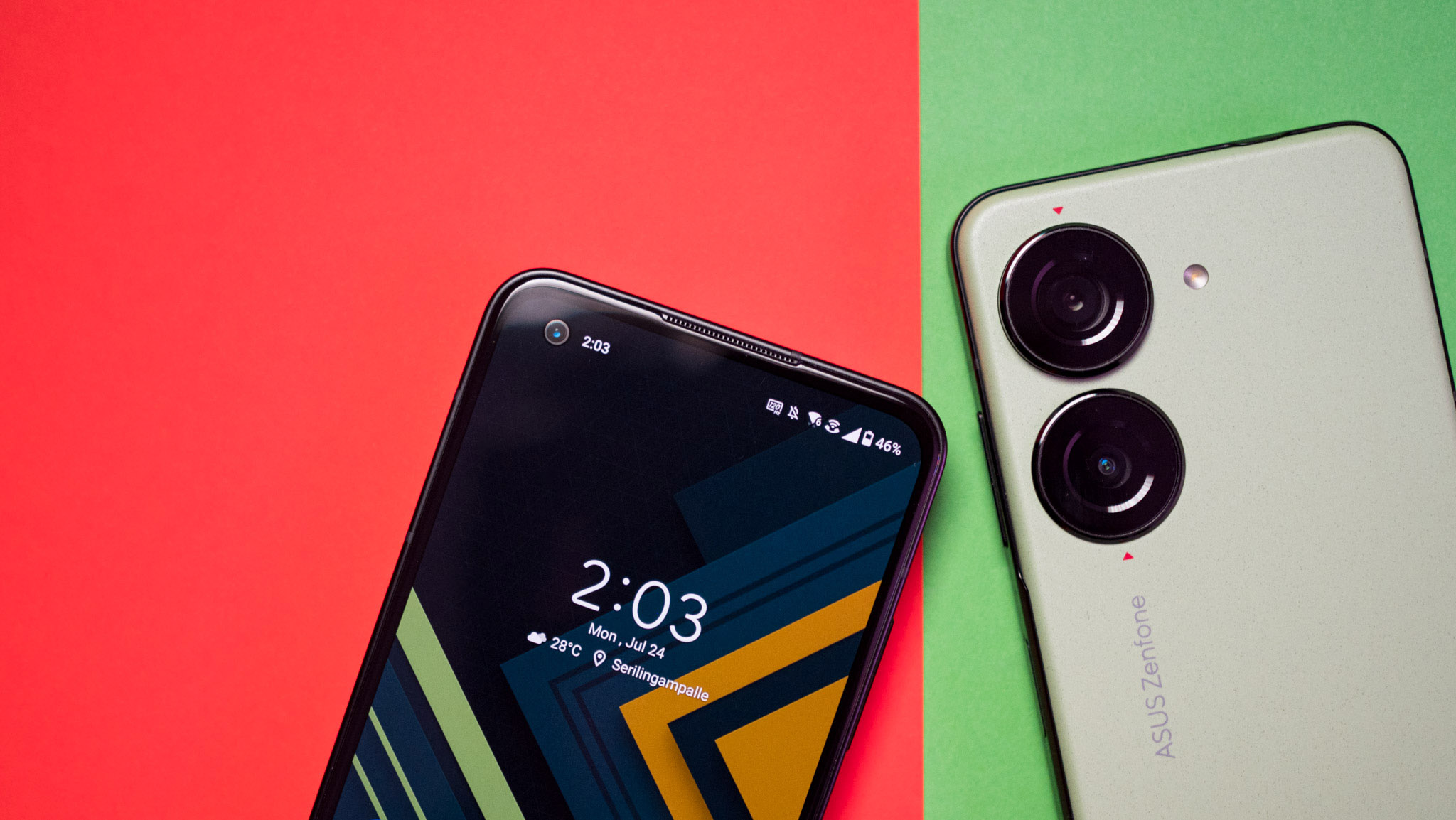
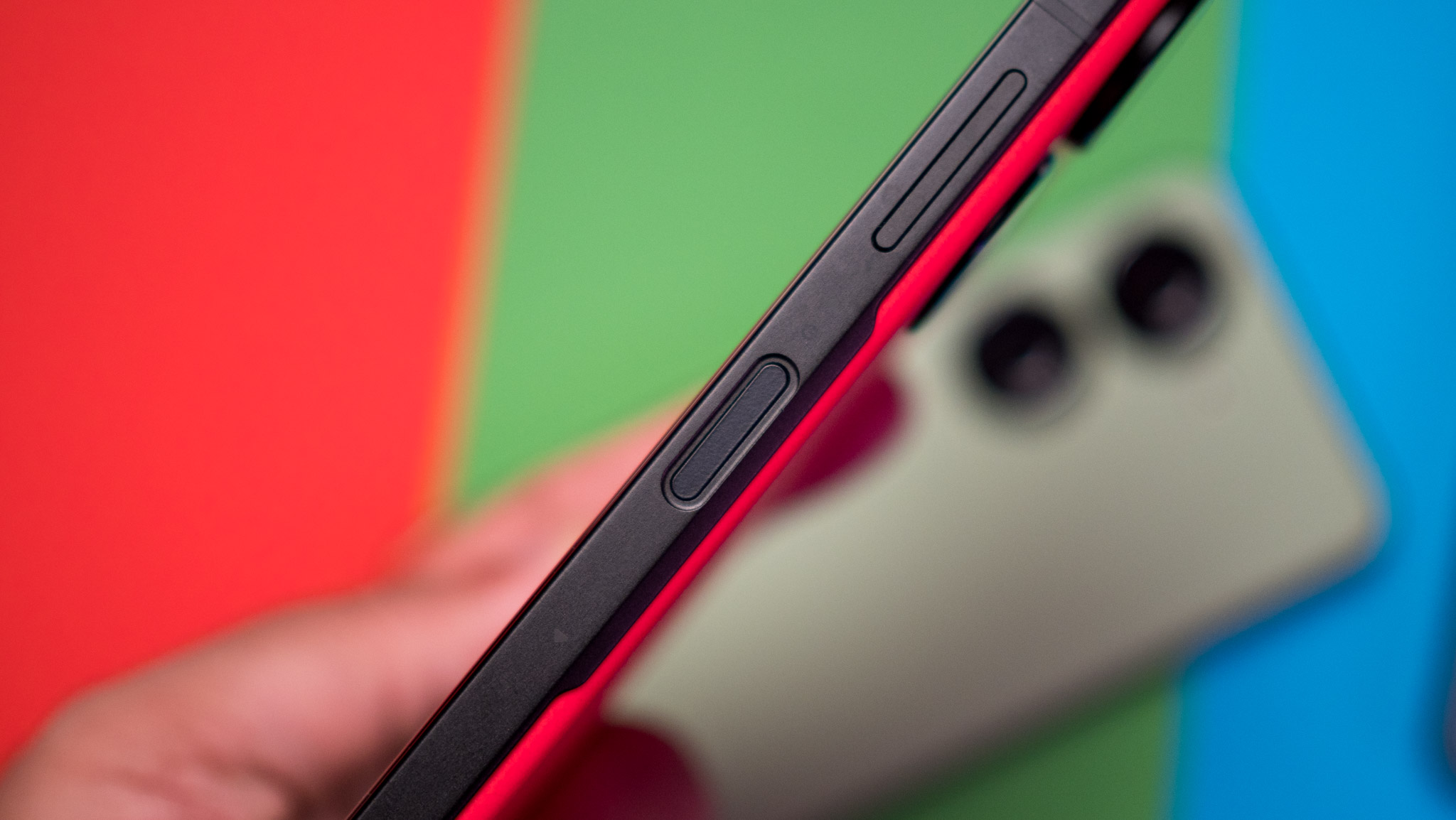
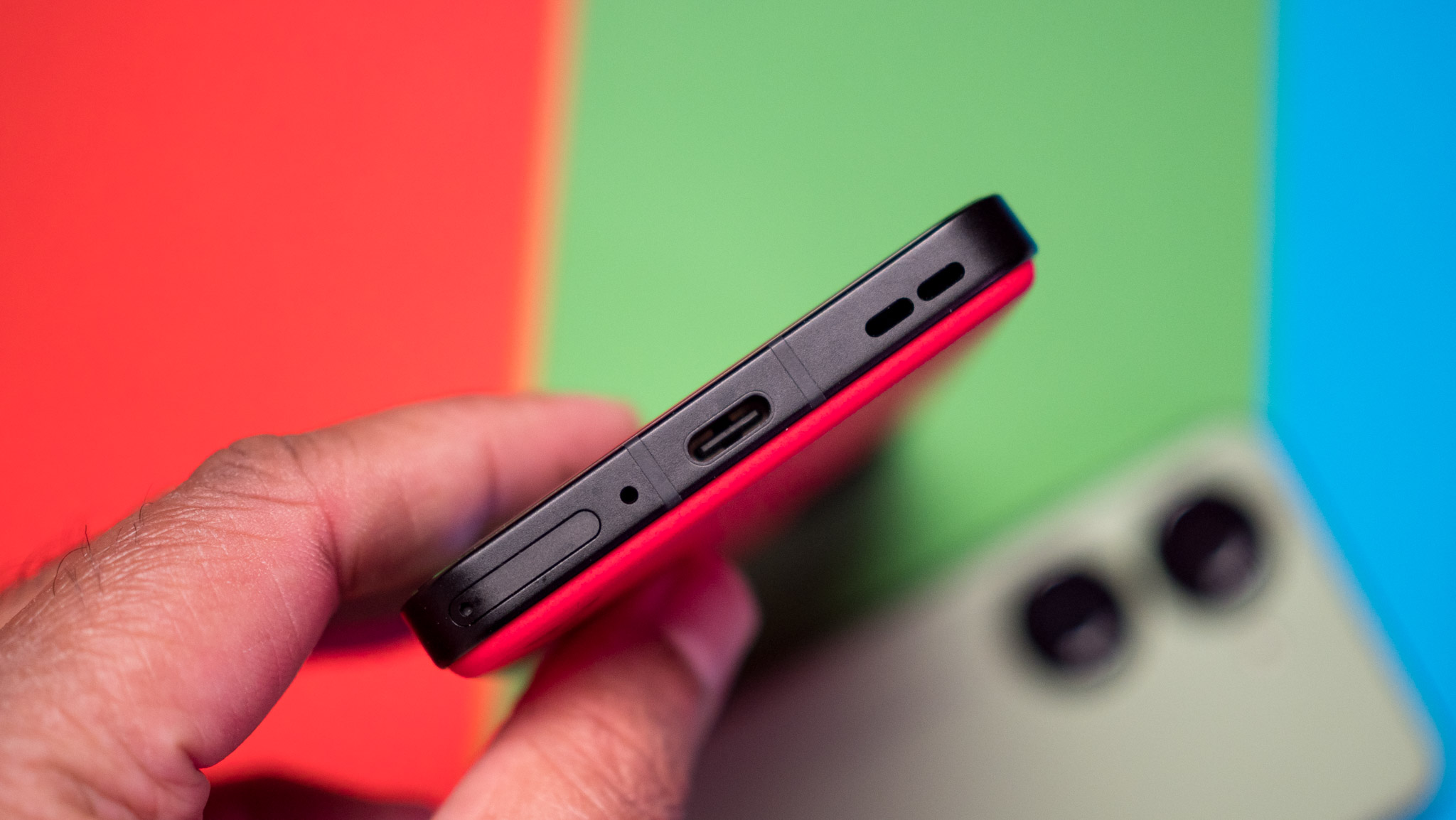
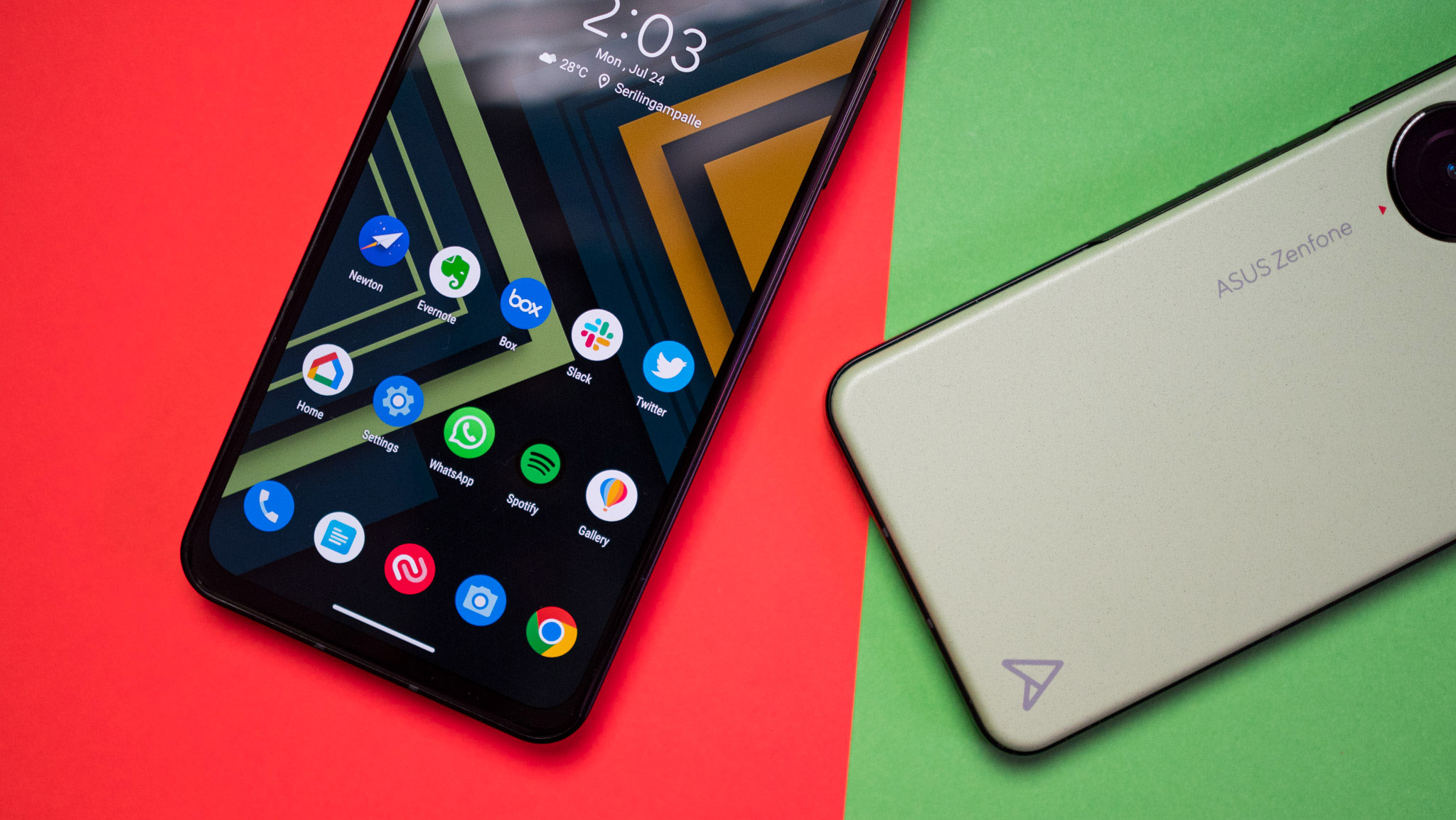
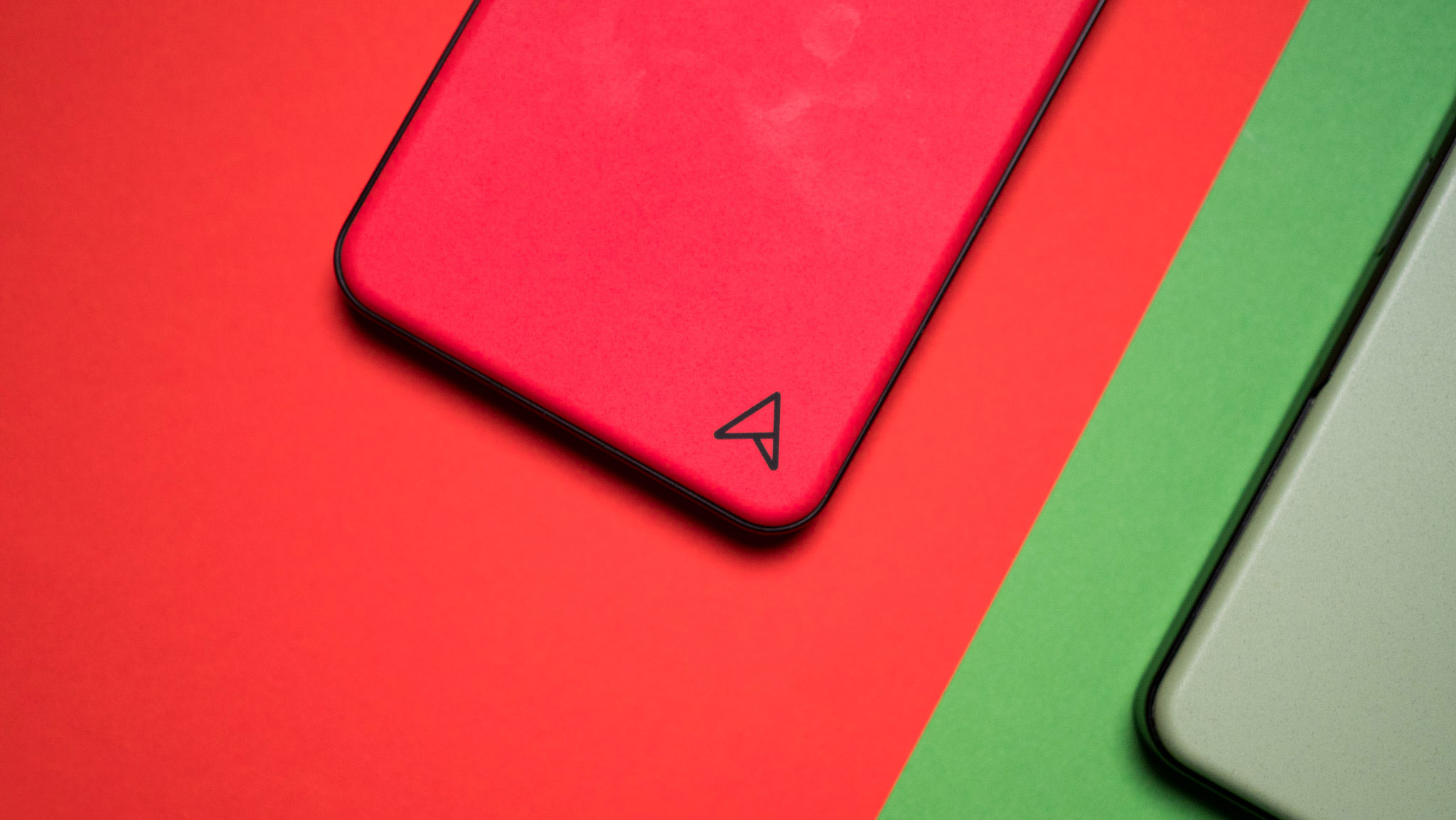
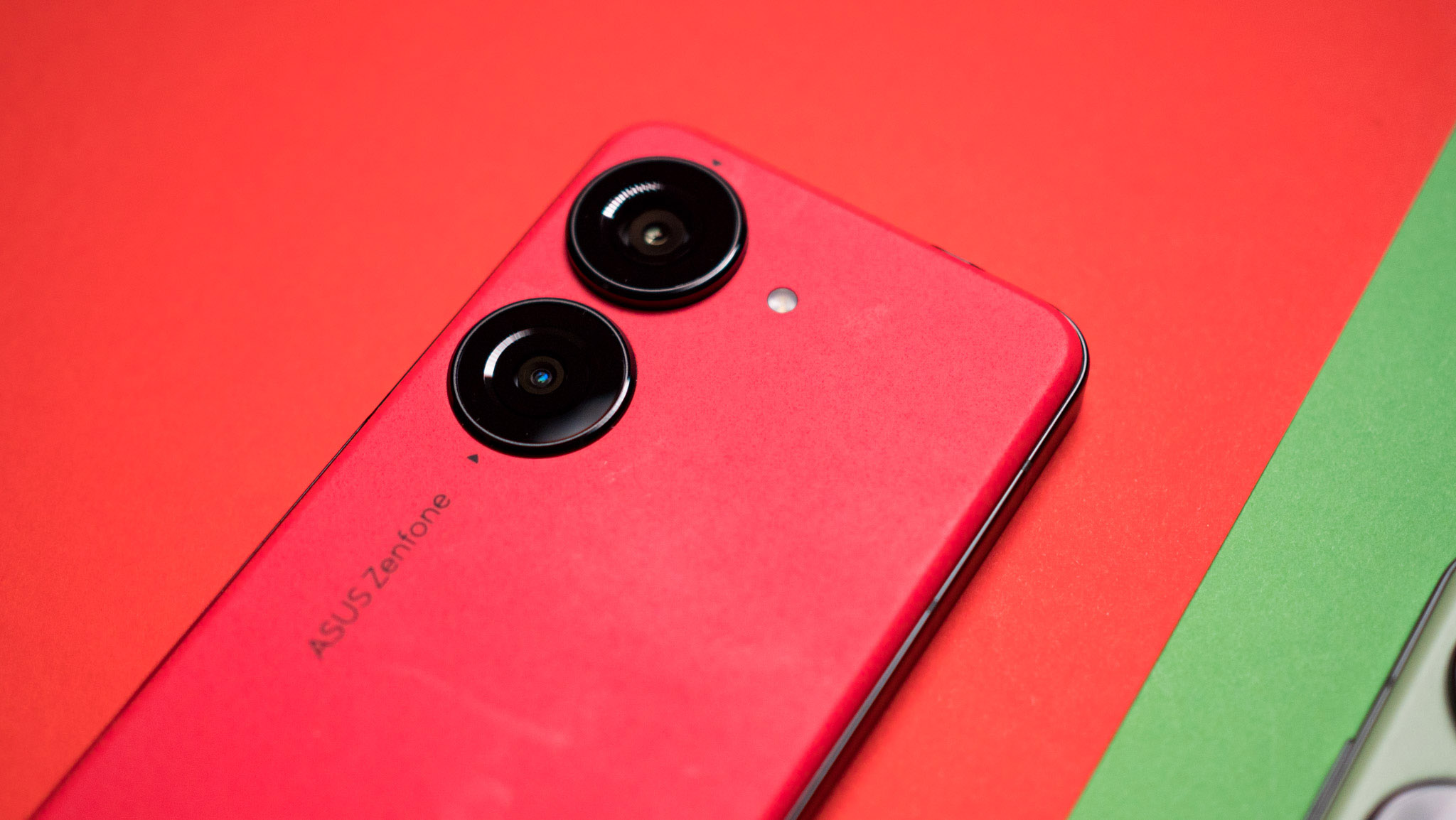
ASUS is sticking with the same set of color combinations as last year — black, blue, red, and white — and is introducing a vibrant green model that looks fabulous. The back of the phone retains the bio-based polycarbonate back, and ASUS notes it went this route as there are fewer CO2 emissions versus a standard glass back. Furthermore, the packaging itself is made out of recycled materials and sues soy-based inks.
As for the in-hand feel, the Zenfone 10 is in a league of its own. The phone weighs 172g and has a height of146.5mm and width of 68.1mm, and that leads to a device that feels just right. ASUS nailed the weight distribution as well, and coming from the Xiaomi 13 Ultra, the Zenfone 10 feels like a breath of fresh air.
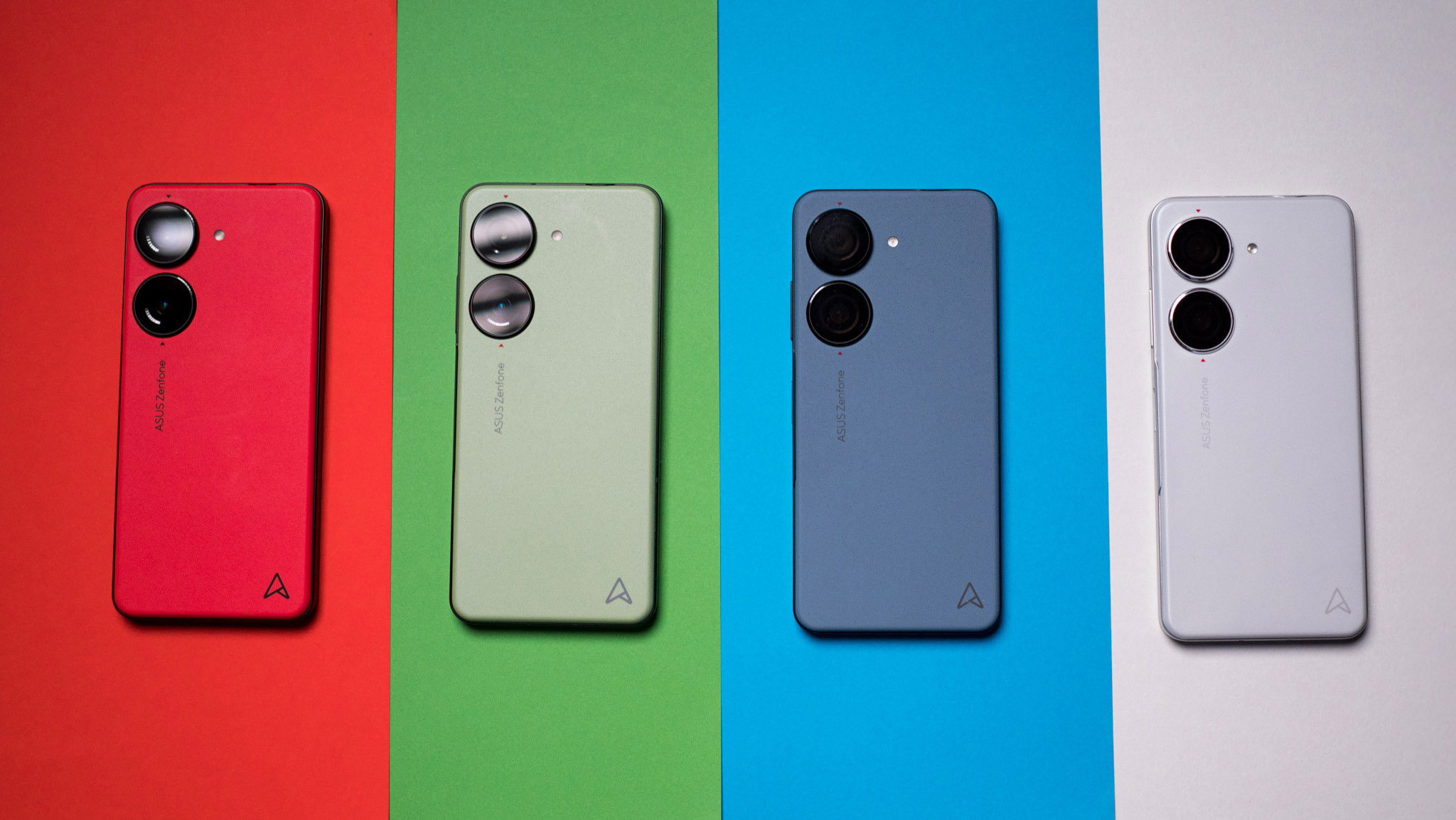
On that note, there's a 3.5mm jack here, and you get IP68 dust and water ingress, giving the Zenfone 10 the ability to weather the elements. ASUS eschewed the standard in-screen fingerprint module for a side-mounted sensor, and it does a great job in daily use. This time around, the ZenTouch button picks up a lot of additional features, including the ability to pull down the notification pane with a gesture, and even YouTube playback controls. But more on that later.
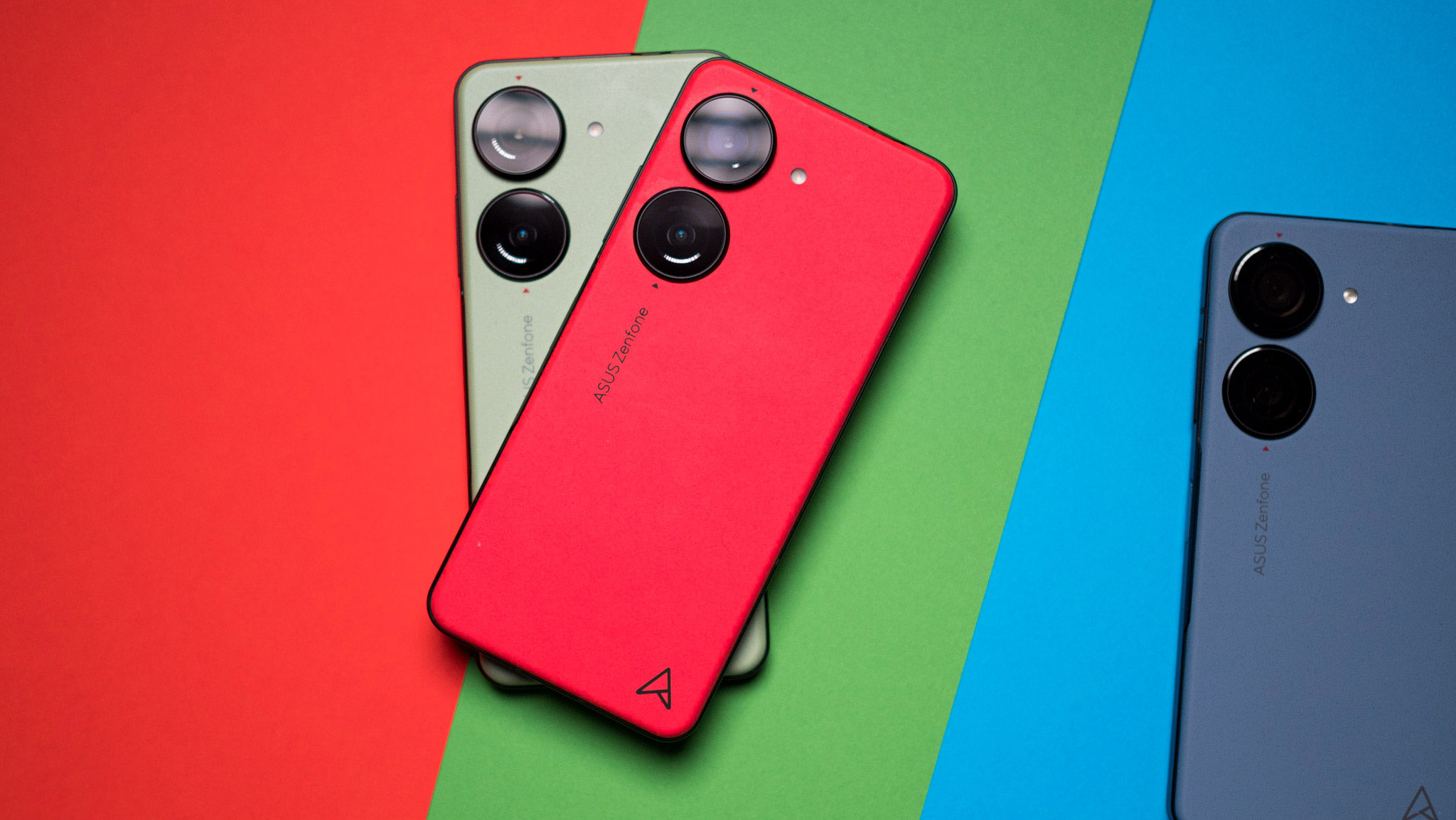
There's little to fault on the design front of the Zenfone 10. The size of the phone combined with the striking color options, aluminum mid-frame, and IP68 ingress protection means the Zenfone 10 isn't missing out in any key areas, and it is the best option if you want a small phone.
ASUS Zenfone 10: Display
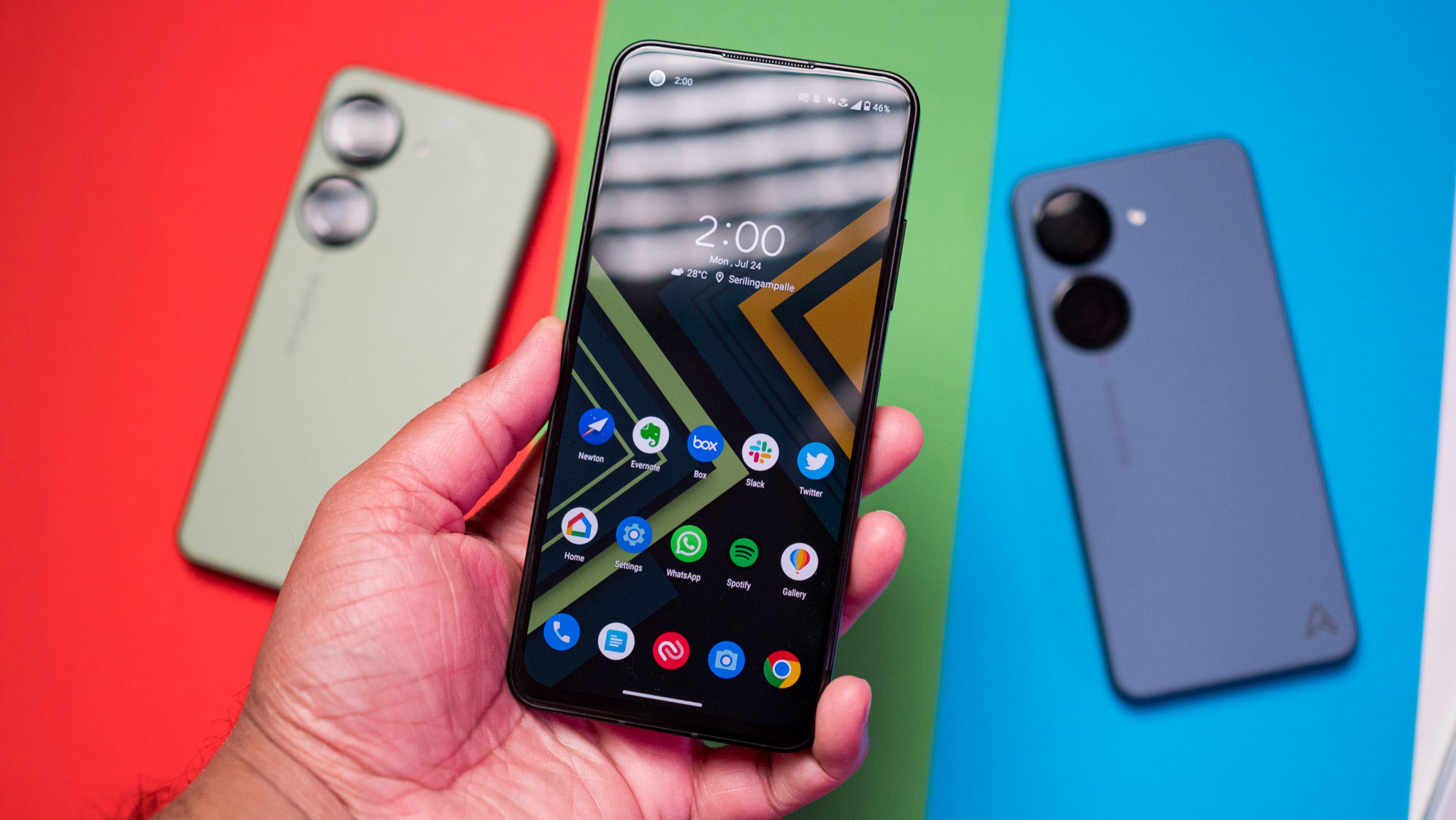
ASUS is using the same panel as last year, and as such you get a 5.9-inch Samsung AMOLED screen with 120Hz refresh. You can manually set the refresh rate to 60, 90, or 120Hz, and there's an overclock option that kicks it up to 144Hz, but that's only available in games.
Like last year, the screen itself is vibrant and has no issues with outdoor visibility or contrast levels. Auto mode was more than adequate in my use case, and there's a decent amount of customizability when it comes to adjusting the color balance. There's a layer of Gorilla Glass Victus covering the screen, and having tested its efficacy on the Zenfone 9 to a great extent last year, I can say with some confidence that it does a stellar job in protecting the AMOLED panel.
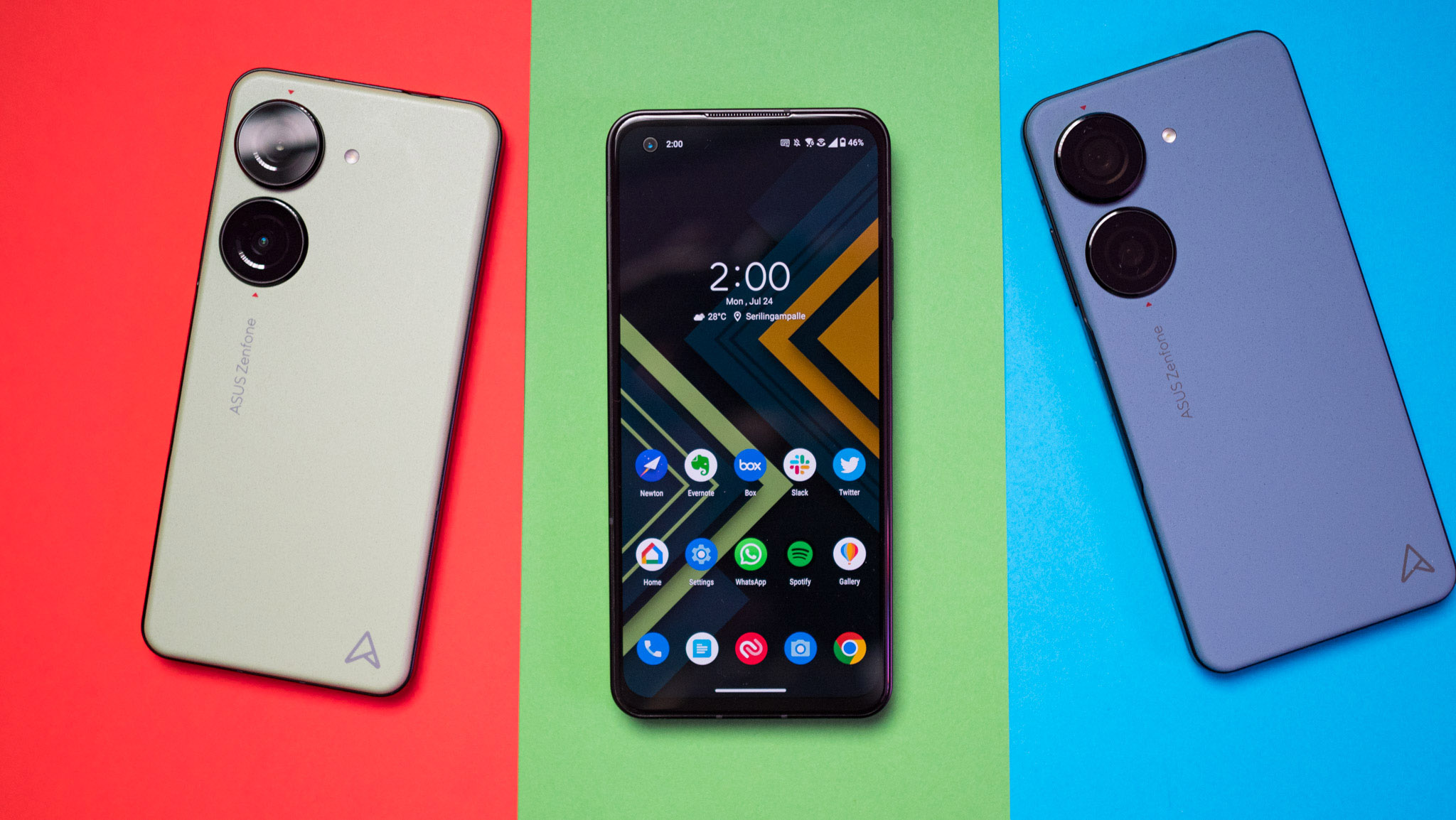
What I like the most about the Zenfone 10 is that it lets you play games at 144Hz; there are no limitations like you get with most Chinese phones — where games are locked to 60Hz regardless of the hardware — and ASUS's Game Genie utility has an extensive set of features to get the most out of the hardware.
Another area where ASUS does things well is audio; you get a 3.5mm jack and stereo sound with identical channels. The sound is tuned by Dirac, and the AudioWizard utility is among the best when it comes to configuring the onboard audio, offering a good range of presets as well as a 10-band EQ. You also get the full suite of AptX codecs, and the onboard sound is great for playing games or streaming content.
ASUS Zenfone 10: Performance and battery
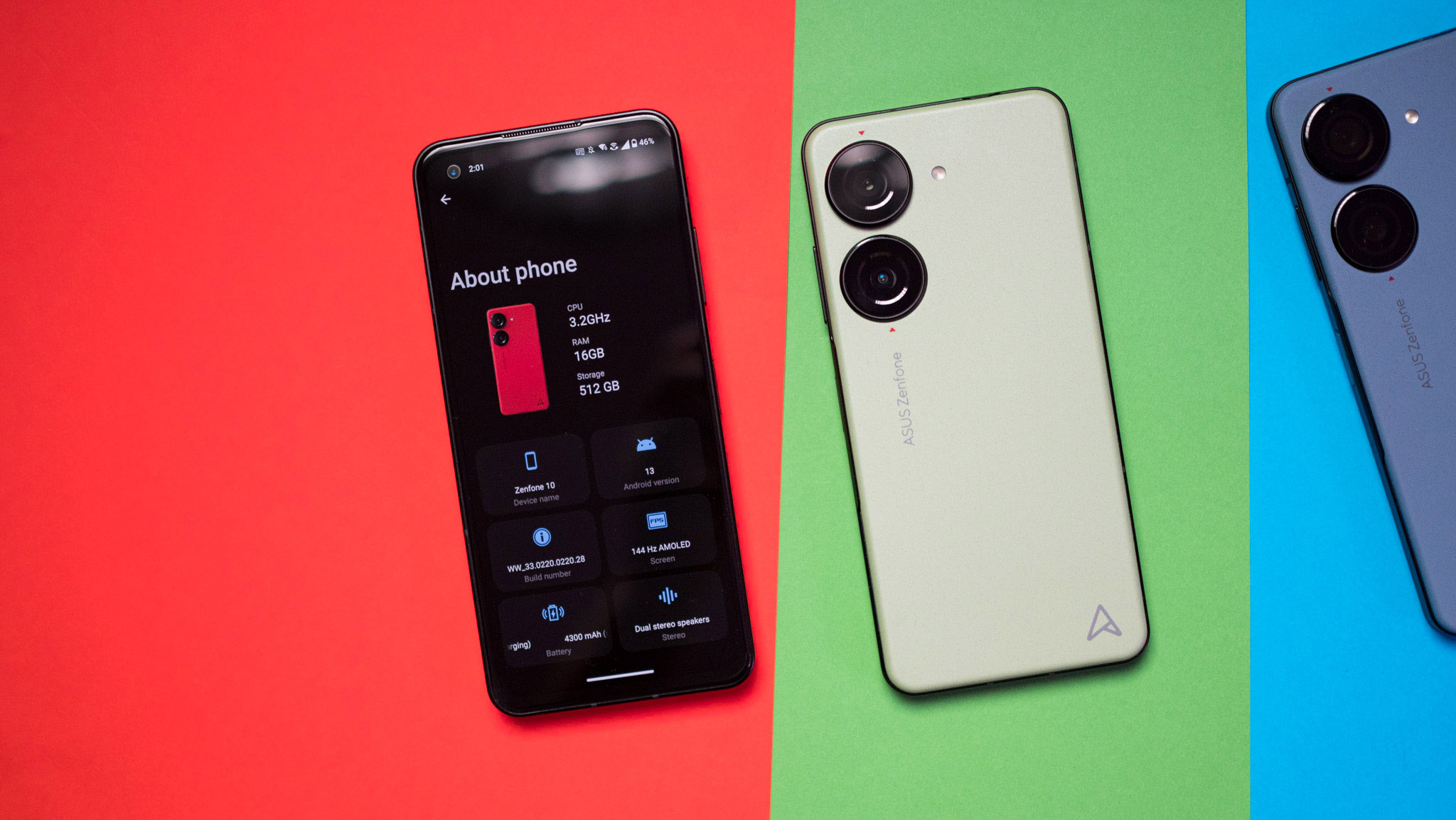
Like the best Android phones, the Zenfone 10 is powered by the Snapdragon 8 Gen 2. Qualcomm made a host of changes to its platform this year, and the result is that the 8 Gen 2 consumes less power while delivering much better performance in just about any situation.
As you'd imagine, the Zenfone 10 has zero issues on the performance front; the software is optimized to take full advantage of the hardware, and I didn't see any slowdowns whatsoever in the month I used the device. As noted above, the Zenfone 10 is particularly great for gaming, and you won't run into any frame rate limitations on this phone. That's great to see on such a small device, and while you don't get a massive screen, it doesn't miss out on any hardware features.
On that front, the Zenfone 10 has 256GB of storage as standard, and there's a 16GB/512GB model on offer this time around. All storage configurations feature UFS 4.0 modules as standard, and that's another positive for the brand.
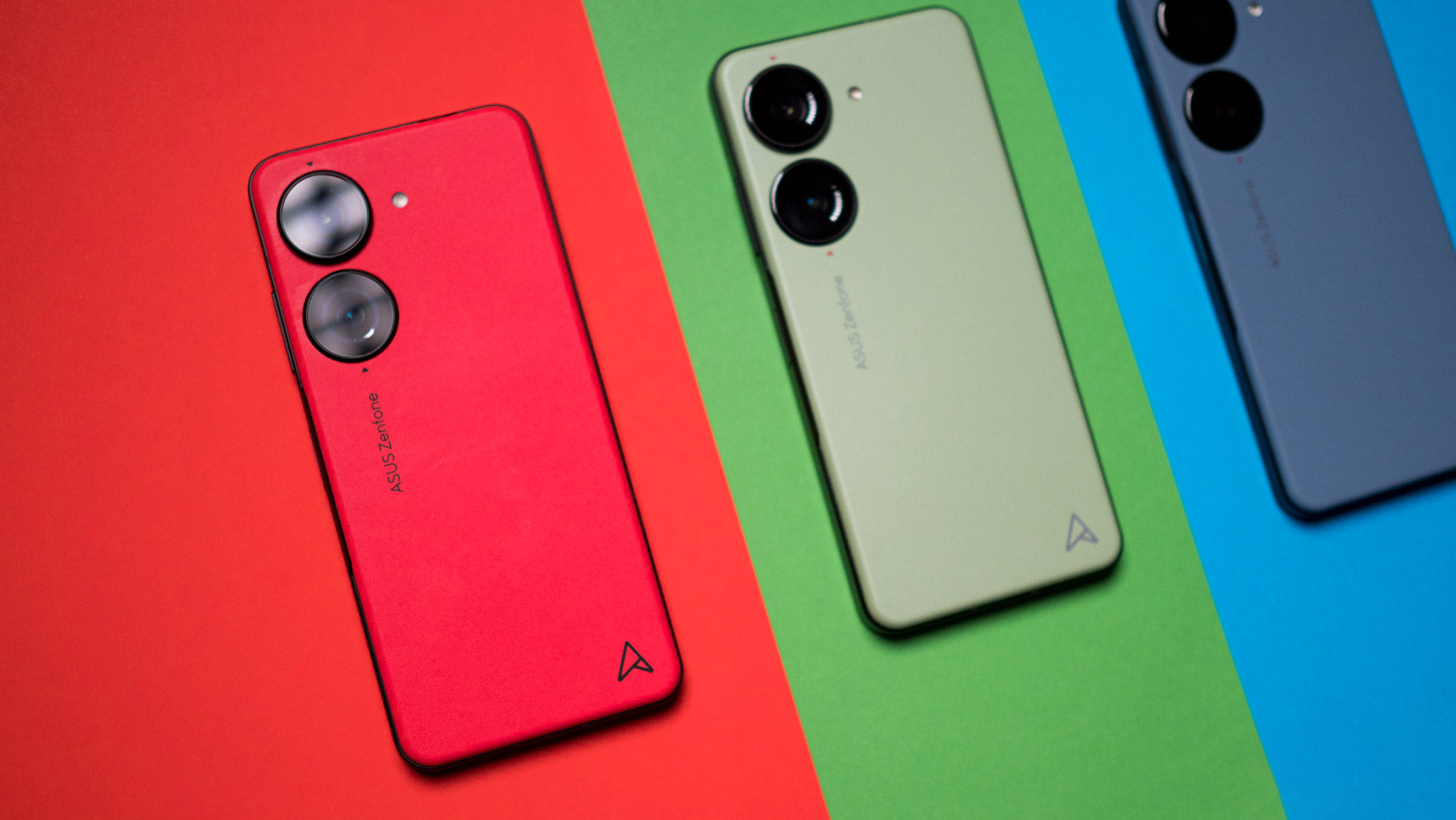
Switching to the battery side of things, the Zenfone 10 has the same 4300mAh battery as last year, and I didn't see a whole load of difference in terms of battery longevity. Considering I got over a day's worth of use out of the Zenfone 9, that's a good thing. There's zero need for any battery anxiety whatsoever, and even on days with heavy use, I never had to worry about the battery running out before I got to bed.
An interesting addition this year is wireless charging, with the Zenfone 10 offering 15W charging over the Qi protocol. I'm not a big fan of the feature as it takes too long — over two hours in this case — but there's clearly a lot of users that need the feature, and it's great to see ASUS adding it on the device. The wired charging tech is unchanged, and you get a 30W charger in the box along with a suite of software features to increase battery longevity.
ASUS Zenfone 10: Cameras
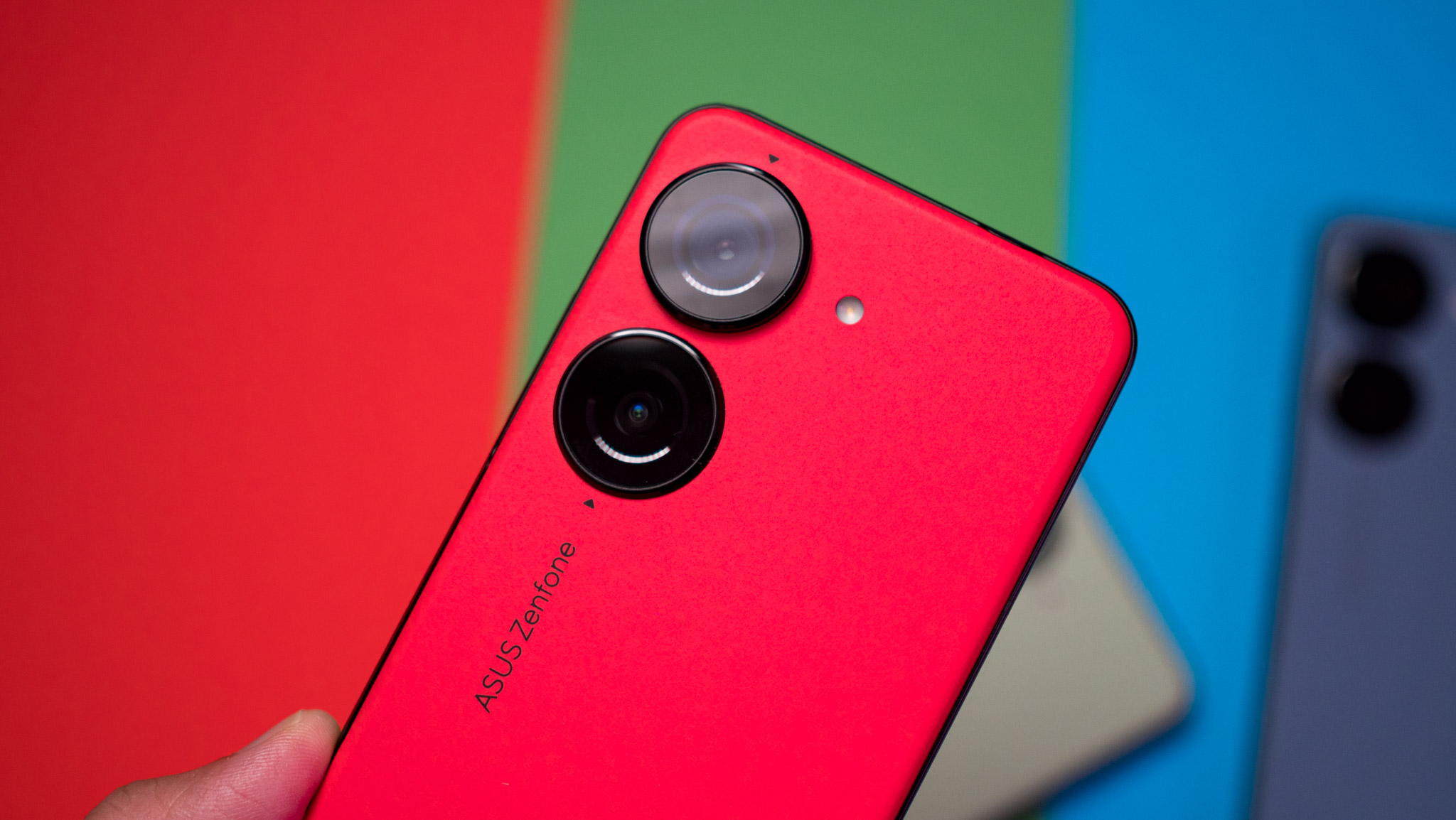
Similar to the design, ASUS isn't making many changes to the cameras, and the Zenfone 10 has the same 50MP Sony IMX766 f/1.9 lens at the back. It's joined by a 13MP wide-angle lens with a 120-degree FoV, and at the front, you now get a 32MP camera with 1.6um pixels. The gimbal stabilization tech that debuted last year has been tweaked for this generation, with ASUS noting better stabilization while shooting videos.
There's also AI-based scene recognition this time around, and the feature automatically adjusts the color balance based on the scenario. Rounding out the changes, you get OZO audio recording, a real-time stabilization mode that dynamically adjusts the field of view according to shakiness of the scene, and the Light Trail mode can now be used handheld.
The 32MP camera at the front features an RGBW module with much better light intake, and ASUS is touting significant gains in this area — particularly in low-light situations. That said, the module misses out on autofocus, and there's no autofocus on the wide-angle lens as well. I really wanted to see a zoom lens on the device, but ASUS says there wasn't enough room to add one, and that it had to balance user requirements when it came to designing the phone, so it left out the zoom lens and went with a larger battery and 3.5mm jack.
The camera interface itself hasn't changed, with all the shooting modes arrayed in a ribbon and toggles for the lenses, night mode, effects, flash, and Google Lens easily accessible. The Pro mode lets you unlock greater control over photos, and there's a similar mode this time aimed at videos too.
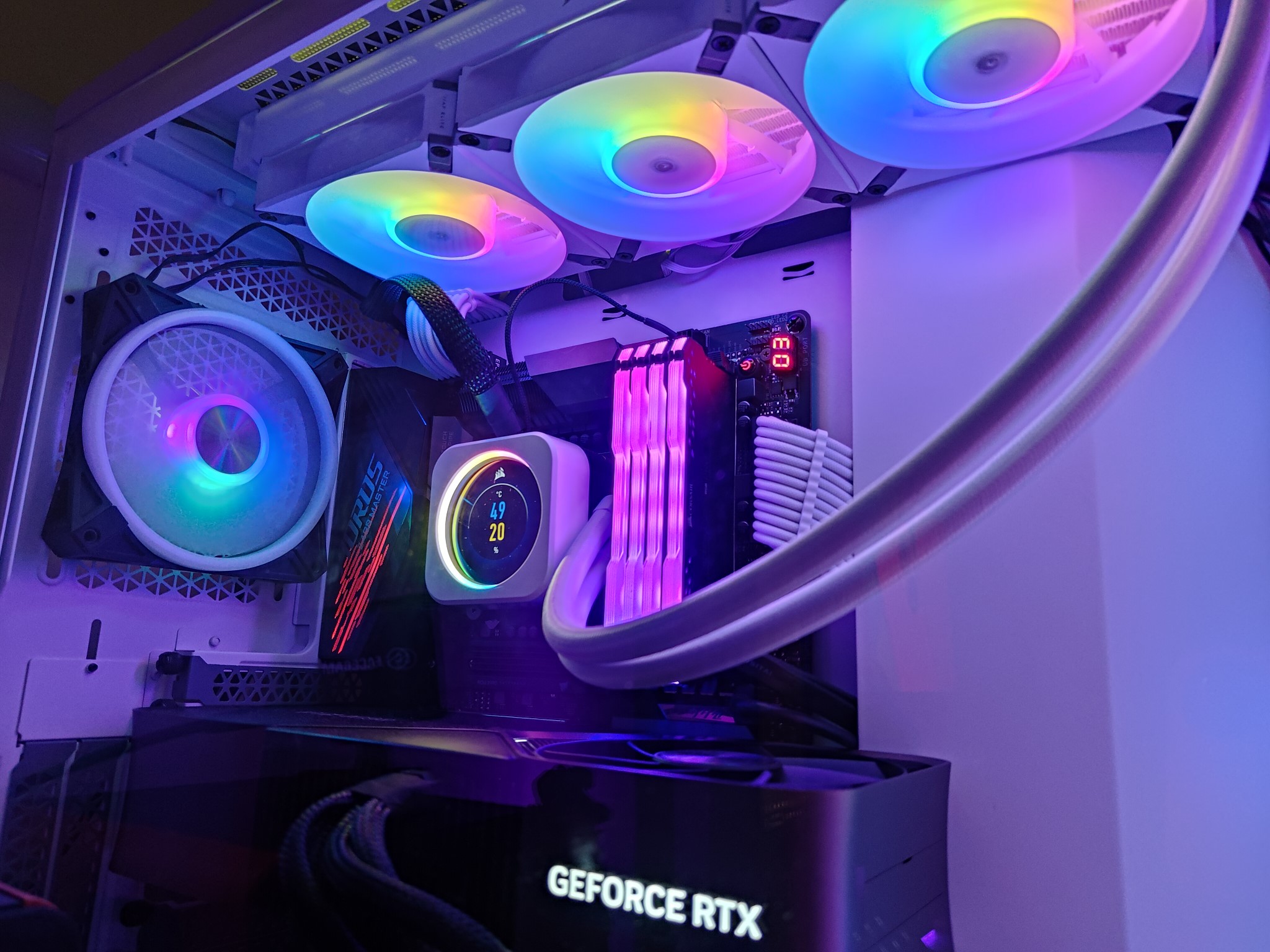


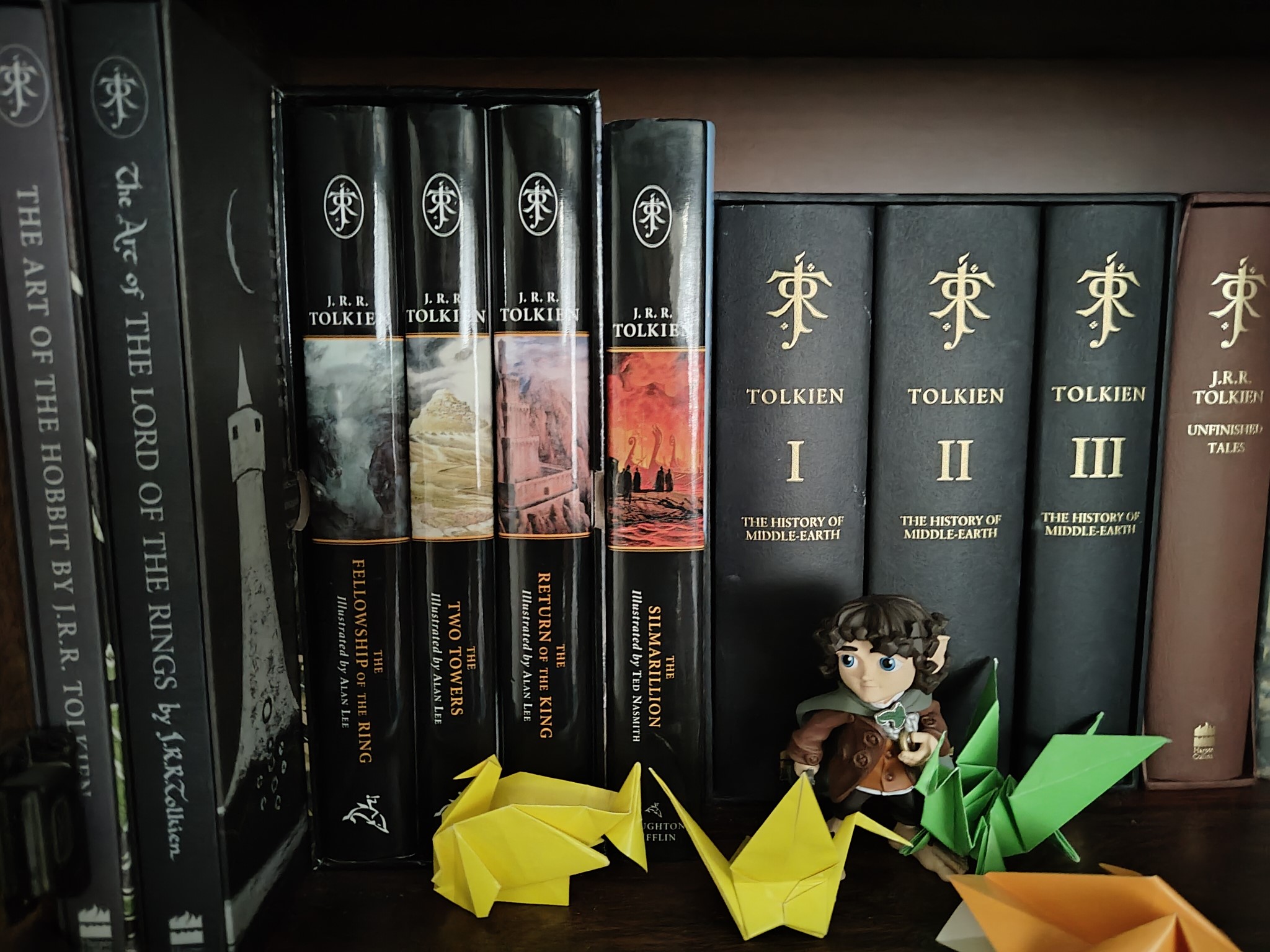


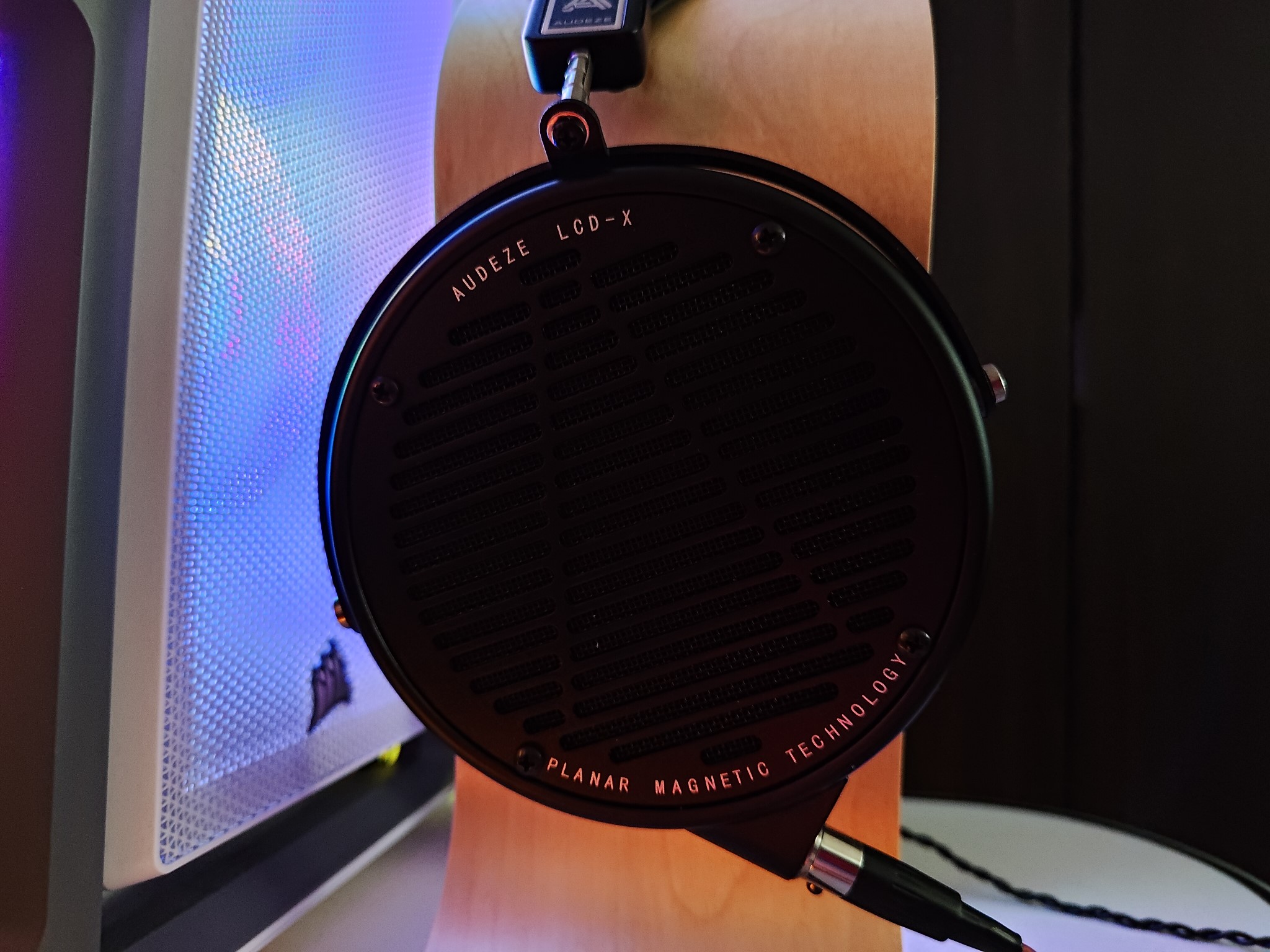
The IMX766 has been a mainstay on phones for well over three years ago, and while there are newer and better sensors available, it has proven to be a reliable workhorse. For its part, the Zenfone 10 manages to take vibrant shots in daylight scenarios, offering plenty of detail and dynamic range without oversaturating the colors. ASUS made tweaks to its camera algorithms with this generation, and it makes the Zenfone 10 take better shots in just about any situation over its predecessor.
That said, it tends to be a bit conservative with exposure levels in low-light situations, and this could be a measure to limit noise in scenes with little to no artificial lighting. You still get usable shots in challenging scenarios, but it isn't quite on the same level as the Pixel 7a. The wide-angle lens is decent enough in its own right, but it misses out on autofocus with this generation, and that makes it a little less versatile.
The addition of a zoom lens would have made the Zenfone 10 that much more enticing, but as it stands, you get a decent set of cameras. Sure, it isn't going to win any awards in this area, but it has proven to be a reliable shooter, and if you need a phone with best-in-class cameras, there are other choices available.
ASUS Zenfone 10: Software
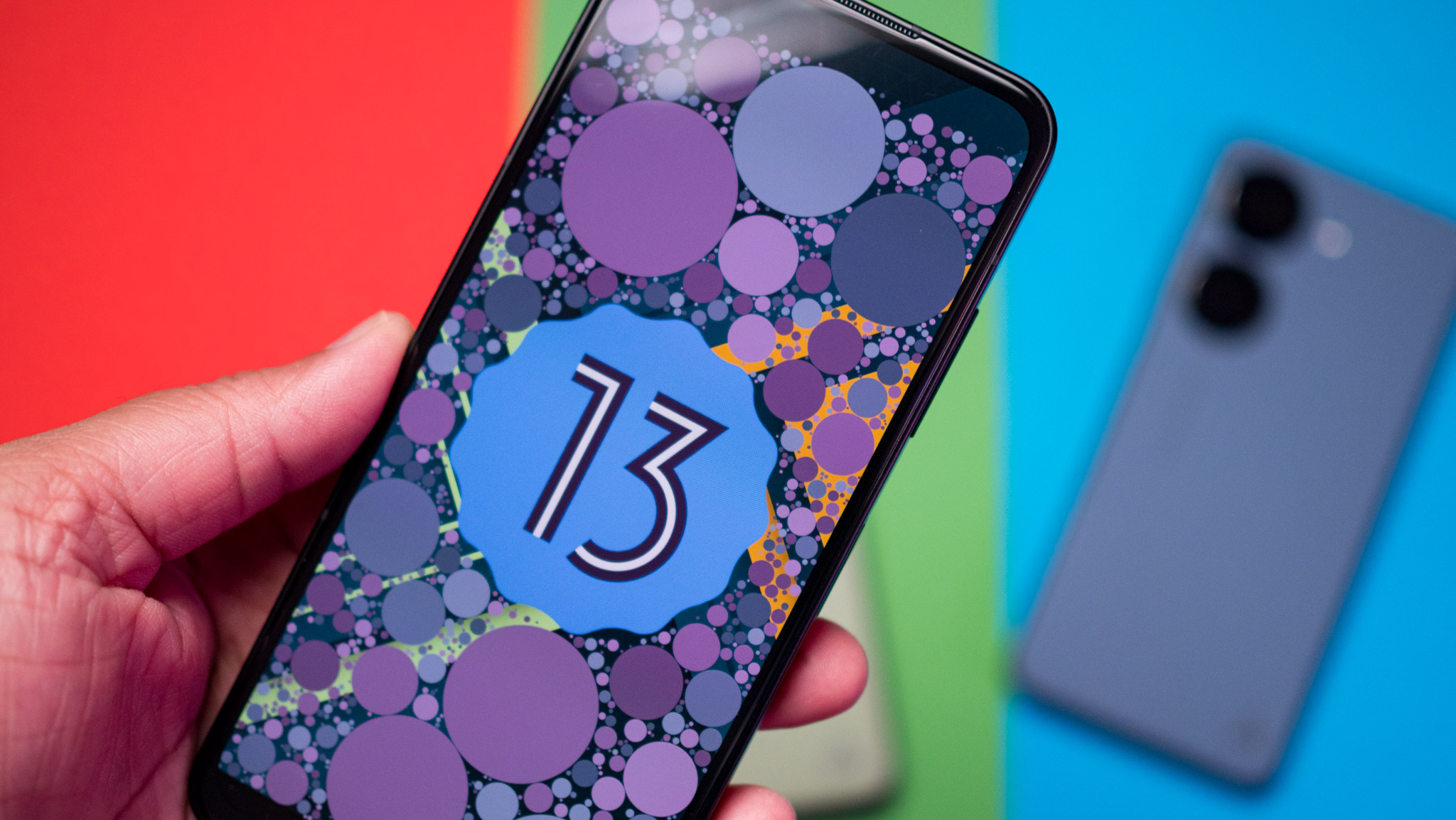
The Zenfone 10 runs Zen UI based on Android 13, and it has a clean interface without any overt customization. ASUS did a terrific job preserving all the features Google introduced in Android 13, and you get a similar set of Material You styling options as a Pixel phone. On top of that, ASUS has a suite of exclusive features that end up being quite useful, including the likes of the ZenTouch button.
You can easily pull down the notification shade by sliding down with your finger on the power button, and you get the ability to launch the camera, take a screenshot, make a call, toggle Wi-Fi or Bluetooth or on off, and so much more. The sheer amount of features available here makes the button a lot more versatile than the standard power key you'll find on most phones, and ASUS deserves credit in this area.
In a similar vein, you'll find plenty of gesture shortcuts, a sidebar that slides out from the edge of the screen, a one-handed mode that shrinks the screen even further, and a back tap gesture that's particularly handy for screenshots. In short, there is a lot to like here, and using Zen UI reminds me of the legacy days of OxygenOS; the interface itself is as close to vanilla Android as possible, and you get a vast suite of customization options tailored for power users — more of this, please!
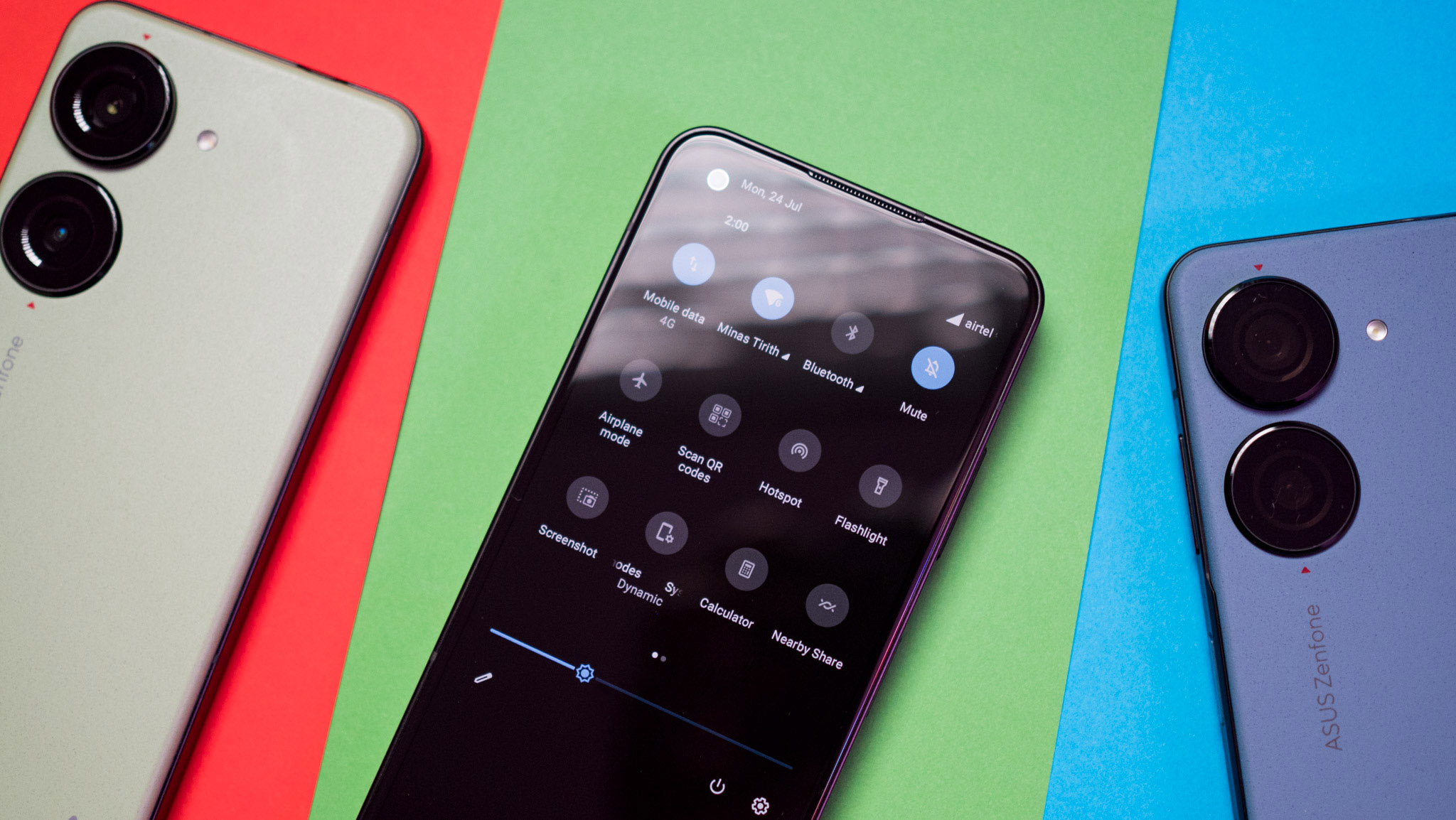
This customizability extends to other areas of the interface as well; you can choose between the Android 13 power-off menu or the ASUS option, which switches to the older layout. The same is true with the notification pane as well, with the ability to choose between the larger rounded tiles that Google introduced with Android 12, or going back to the Android 11-esque six-tile layout. These are all small things, but they make a tangible difference while using the phone.
Elsewhere, the gallery now uses on-device machine learning to deliver better search results, and it surfaces highlights based on content stored on the device. ASUS also made changes to the always-on mode, introducing new clock styles and the ability to use your own image or text. To round things off, there's now a scrolling screenshot mode baked into Zen UI.
As you can probably tell, I really like what ASUS has done with Zen UI, and it is one of my favorite Android interfaces at the moment. The only drawback in this area is the software update situation; the Zenfone 10 will only get two platform updates and four years of security updates, and that just doesn't cut it in 2023. Most Android manufacturers have made tangible gains in this area over the last 12 months, and we're at a point where most phones in this category will get at least three guaranteed Android OS updates.
ASUS says it isn't able to provide long-term updates to its phones as it has limited software resources, but that excuse doesn't work when you consider the state of the industry and how much the Zenfone 10 costs. Sure, there are budget Android phones that still only get two Android OS updates, but most phones that retail for over $500 are getting long-term updates, and I can't help but feel that the Zenfone 10 is hobbled by this move.
ASUS Zenfone 10: The competition
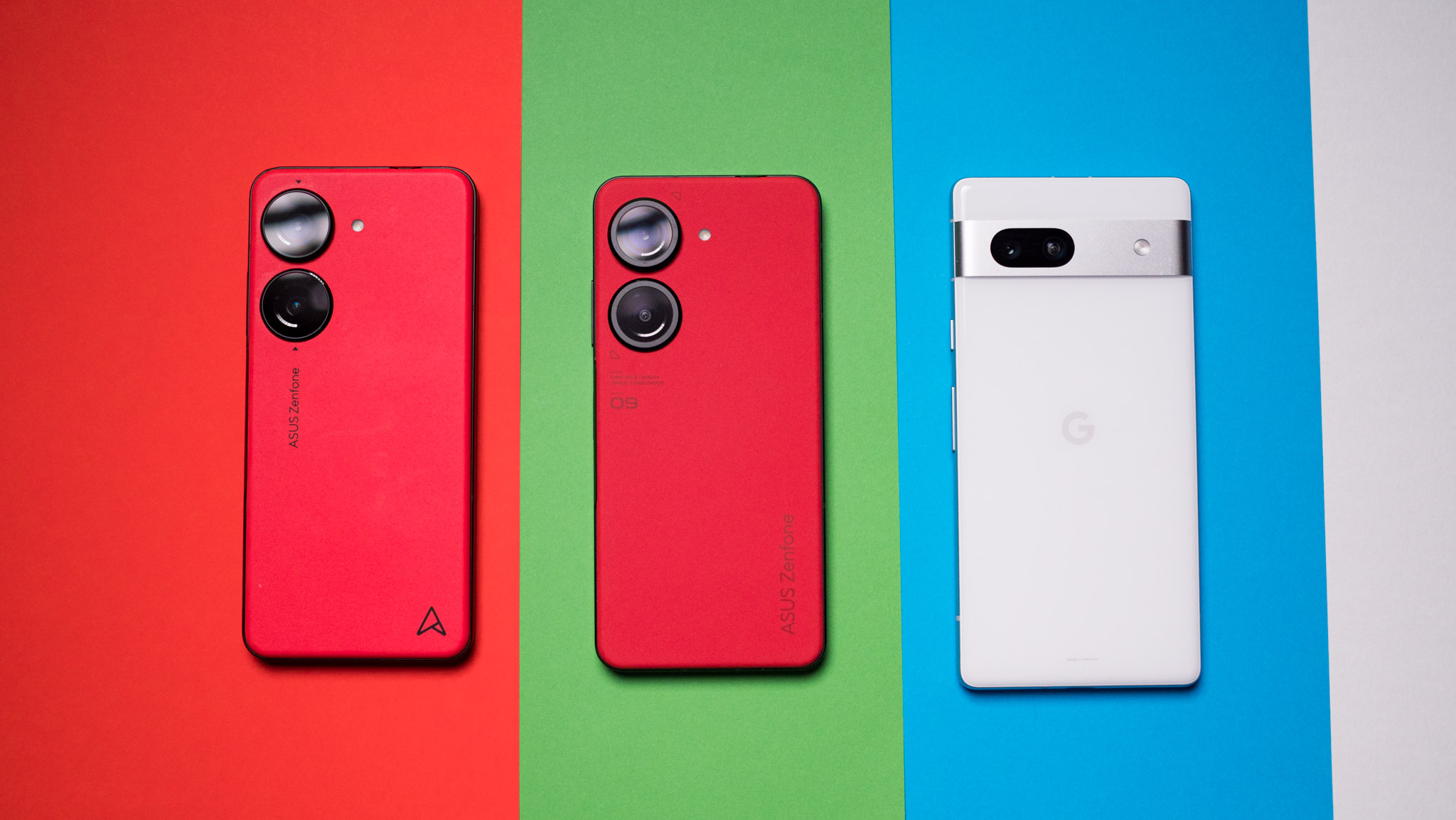
There aren't many choices if you want a small phone in 2023. The standard Galaxy S23 is a decent enough option, and while it isn't quite as small as the Zenfone 10, you get a device that feels more premium in-hand, and it will pick up double the number of platform updates.
There's also last year's Zenfone 9 to consider. The phone is still going strong a year after its release, and considering the lack of major changes on the Zenfone 10, the Zenfone 9 may just be the better option given that it has the same design and cameras.
I also like the Pixel 7a, and while Google doesn't cater to the small phone market, there's no denying that the 7a is an absolute beast of a phone.
ASUS Zenfone 10: Should you buy it?
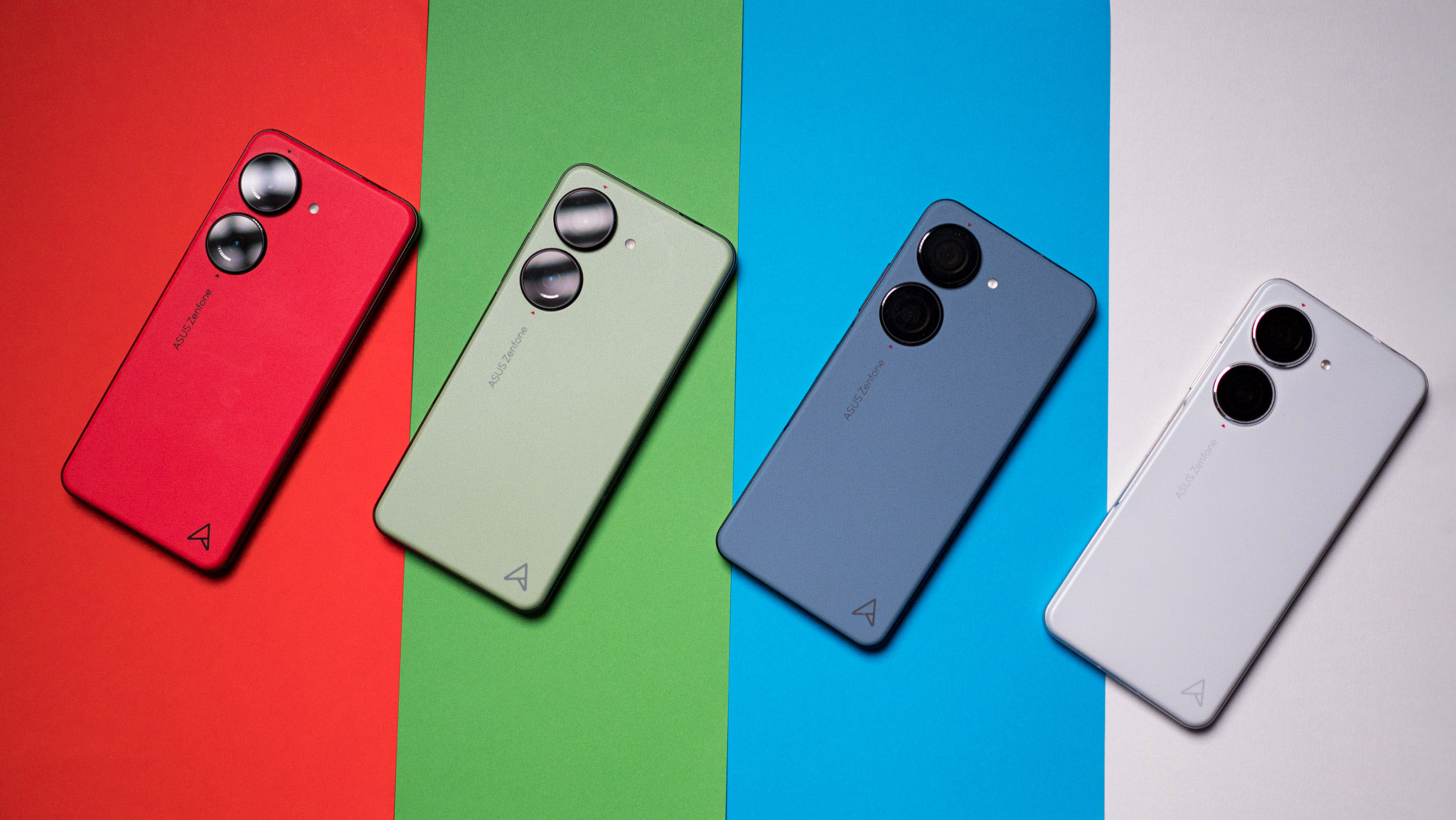
You should buy this if:
- You want a small phone that doesn't miss out on any features
- You need all the extras like wireless charging and ingress protection
- You want a clean interface with a high degree of customizability
You shouldn't buy this if:
You need long-term software updates
ASUS isn't reinventing the wheel with the Zenfone 10. The phone uses the same foundation as last year's model, but you get a few tweaks that give it a slight advantage. You're still getting the same great screen, cameras, and battery life, all in a package that's designed for one-handed use.
While ASUS did a stellar job retaining the Zenfone 9's best features, its shortcomings are intact as well. The software situation hasn't changed to any meaningful degree, and that puts the Zenfone 10 at a clear disadvantage over its Android rivals. Most Chinese brands made huge gains in this area over the last 12 months, and as a result, we're now in a situation where the Zenfone 10 will get fewer platform updates than most other phones in its category.
ASUS really needs to change its position on long-term updates, because the hardware itself can easily last over five years. There's no limitation on that front whatsoever, and the fact that the device will only get two guaranteed Android OS updates takes the shine off an otherwise faultless package.
Nevertheless, there really isn't an alternative if you're in the market for a small phone — unless you pick up last year's Zenfone 9.
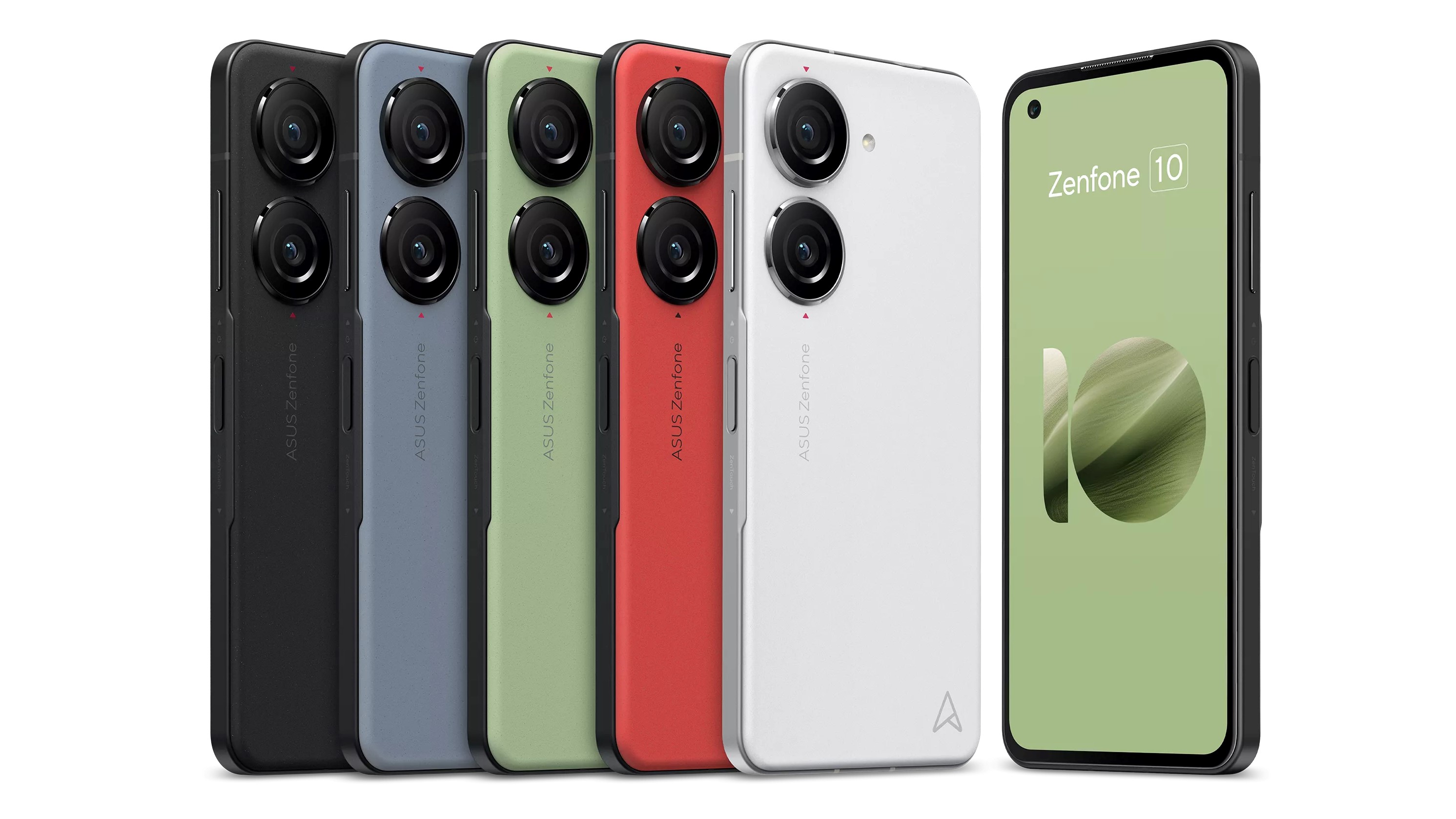
It's easy to sum up the Zenfone 10; this is the best small phone you can get at the moment, so if you need a device that's designed for one-handed use, it is the obvious choice. For the second year in a row, ASUS did a magnificent job retaining all the features of a flagship in a small chassis.

Harish Jonnalagadda is Android Central's Senior Editor overseeing mobile coverage. In his current role, he leads the site's coverage of Chinese phone brands, networking products, and AV gear. He has been testing phones for over a decade, and has extensive experience in mobile hardware and the global semiconductor industry. Contact him on Twitter at @chunkynerd.
-
Daniel Gomes The Zenfone 10 is excellent however if you want a small phone with similar features at a lower price look at Sony Xperia 10v. Also the new Xperia 5v looks like it's going to be more affordable and compete with the AsusReply
